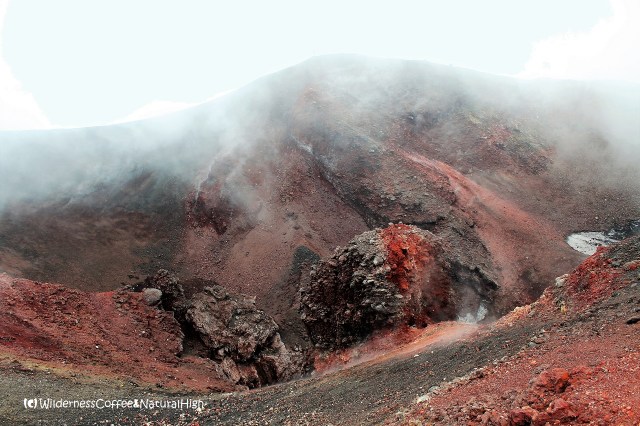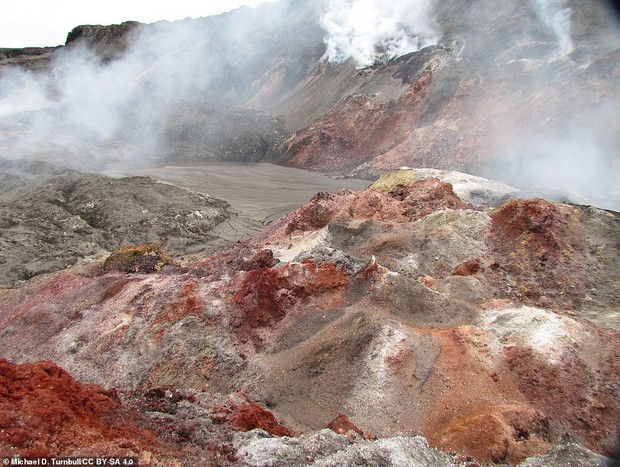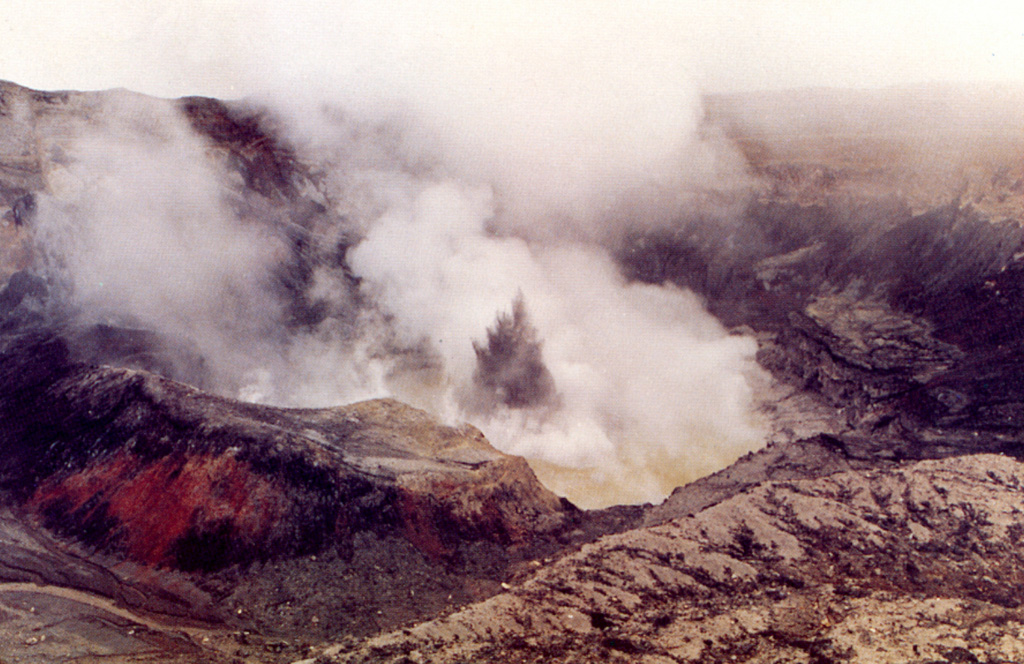East of Cape Bathurst, Northwest Canada, there is a strange hill called Smoking Hills (also known as Smoking Hills). The reason it is called with such a special name is because all year round, smoke rises up even though there is no fire burning. The rocks are bright red like coals, white smoke comes out from the rocks day and night.
This hell-like scene shocked European sailors when they first discovered this place.

A scene from a disaster movie? Hell? No, this is exactly the real smoking hill.
According to Atlas Obscura, this strange phenomenon was discovered by Irish explorer Robert McClure in the early 1800s. His expedition journeyed to the North Pole to search for missing explorer John Franklin. , who had disappeared five years earlier during an expedition to map the Northwest Passage.
The Investigator sailed north across the Pacific Ocean and entered the Arctic Ocean through the Bering Strait. She then headed east to accompany another British expedition ship traveling from the Northwest.

The first time the smoking hill was discovered was around the early 1800s by Irish explorer Robert McClure.


The red rocks have been burned for centuries.
When McClure’s search party reached the mouth of the Horton River on the Beaufort Sea near Cape Bathurst (Canada), he saw smoke from the distant hills. Suspecting that the smoke might come from Franklin’s campfire, McClure immediately dispatched a team of sailors to investigate.
The expedition team discovered thick columns of smoke rising from vents on the ground. They returned with a stone still smoldering. According to circulating stories, when they placed the stone on McClure’s wooden table, it burned a hole in the surface.
McClure’s expedition believed that volcanic activity had created the scene of the burning hill, but there was actually another explanation.
According to a recent article on IFL Science on May 16, scientists said this self-smoking hill is the result of a chemical reaction that took place over thousands of years.
The smoke is generated by the spontaneous combustion of shale layers. In shale there are minerals such as sulfur, pyrite (crystalline iron sulfide mineral) and brown coal. As the cliffs eroded, they were exposed, reacted with air and burned, creating a constant stream of smoke that never stopped day or night.

As a result of this reaction, the surrounding area is filled with sulfur dioxide gas, making the air toxic and difficult to breathe.
Around this hill there are also scattered ruby red puddles. The water is acidic and rich in sulfur. High sulfur levels mean the space reeks of rotten eggs.
“It really is like hell on earth. Everything about it is horrible,” said Steve Grasby, a research scientist at the Geological Survey of Canada who studies the geochemistry of sedimentary rocks. said.
“The ground is very hot. It’s black. Black covers the whole area. It’s deep mud so when you walk through it, you feel like you’re about to be trapped in this hot, humid land. And then there are the chimneys emitted. Loud sound, steam. Strong smell of hydrogen sulfide ,” he said.
“You have to wear all this protective equipment, otherwise your eyes and throat will burn. It could kill you instantly if you get too close to this location,” Grasby added .

It’s unclear how long the smoke has been rising from the hill, but Grasby said the phenomenon likely began about 7,000 to 10,000 years ago when glaciers receded in the area and exposed the rocky hill.
Indigenous people have long come to this area to collect coal. The nearest community (nearly 100km away) is called Paulatuk, which means “place of soot” or “place of coal” in the Inuvialuktun language.
Smoking Hills is located on the east coast of Cape Bathurst, a few kilometers south of Beaufort Sea, so there are no roads leading to this area. If you want to explore this place, you can only reach it by helicopter or boat.






